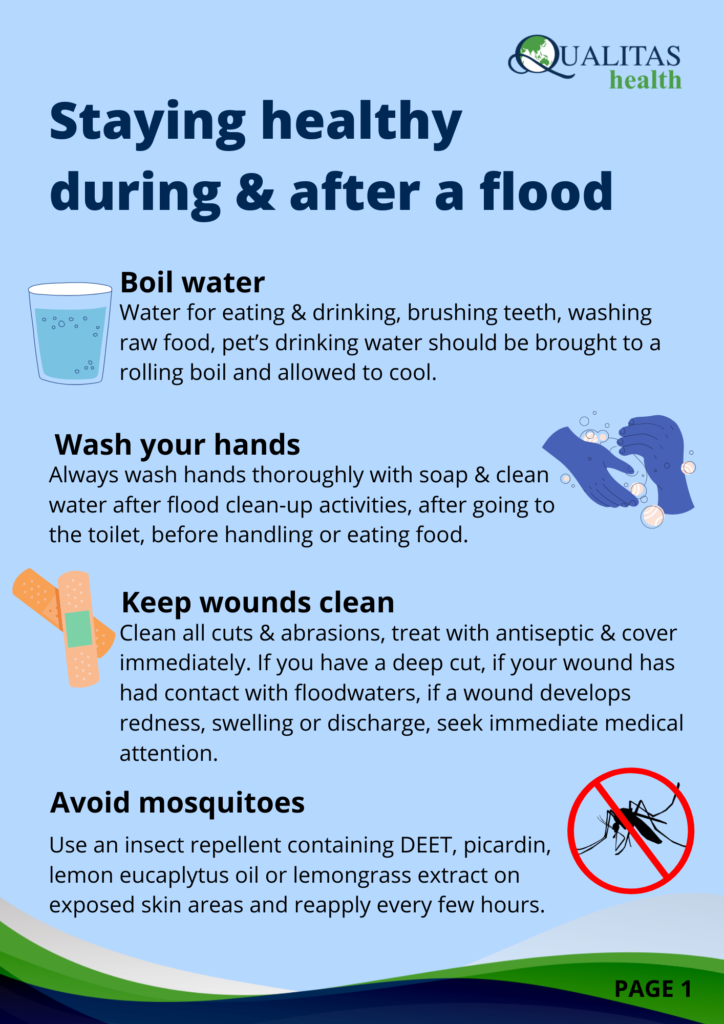Staying Safe With Flood Alerts: A Step-by-Step Guide

Table of Contents
Understanding Flood Alert Systems
Different levels of flood alerts indicate varying degrees of risk. Understanding these alerts is the first step in effective flood preparedness. Failing to understand these alerts could mean the difference between being safe and facing a dangerous situation.
-
Flood Watch: Conditions are favorable for flooding. This means that heavy rainfall, snowmelt, or dam failure is possible, increasing the risk of flooding in your area. This is a good time to review your flood plan and prepare your home.
-
Flood Warning: Flooding is occurring or is imminent. A flood warning indicates that flooding is already happening or is about to begin in your specific location. Immediate action is required.
-
Flood Emergency: A severe flood is happening, requiring immediate action. This is the highest level of alert, signifying a life-threatening situation. Evacuation is usually mandatory.
The importance of understanding your local flood alert system cannot be overstated. Sign up for notifications through SMS, email, or a dedicated weather app from sources like the National Weather Service or your local authorities. Staying informed is paramount. Knowing where to find reliable flood alerts—whether it’s through the National Weather Service website, local news channels, or official government apps—is critical.
Creating a Flood Preparedness Plan
Proactive planning is your best defense against the devastating effects of flooding. A well-defined plan significantly increases your chances of safety and minimizes property damage.
-
Identify Potential Flood Risks: Assess your property's vulnerability. Are you in a flood plain? Are there nearby rivers or streams that could overflow? Knowing your risk helps you prioritize your preparedness efforts.
-
Develop an Evacuation Plan: Plan escape routes from your home, considering multiple paths in case one becomes blocked. Designate a meeting point for your family outside the flood-prone area. Practice your evacuation plan regularly.
-
Create an Emergency Supply Kit: Gather essential supplies, including at least three days’ worth of water (one gallon per person per day), non-perishable food, medications, first-aid supplies, important documents (copies stored in a waterproof bag), flashlights, batteries, and a portable radio.
-
Secure Valuable Items: Move important documents, electronics, and valuable possessions to higher ground. Elevate furniture and appliances if possible.
-
Learn to Turn Off Utilities: Know how to quickly and safely shut off gas, electricity, and water supplies to your home in case of flooding.
-
Identify Safe Sheltering Locations: If evacuation is necessary, identify potential safe locations like a friend’s home outside the flood zone or designated evacuation shelters.
Protecting Your Home Before a Flood
Taking preventative measures can significantly reduce flood damage.
-
Elevate Electrical Appliances and Valuable Items: Keep electronics and other valuables off the floor, especially in basements.
-
Install Flood Barriers or Sandbags: If appropriate for your situation and you have time, consider installing flood barriers or sandbags to protect your property.
-
Clear Gutters and Drains: Ensure that gutters and drains around your property are clear to allow for efficient water runoff.
-
Protect Your Basement: Waterproof your basement, or at least take measures to protect against water damage.
-
Consider Flood Insurance: Flood insurance offers crucial financial protection against flood damage, a protection often overlooked until it’s too late.
Responding to a Flood Alert
Your actions will depend on the level of the flood alert.
-
Flood Watch: Monitor the situation closely, review your emergency plan, and prepare your home by moving valuables to higher ground and securing outdoor items.
-
Flood Warning: If advised to evacuate, do so immediately. Move valuables to higher ground, protect your home as much as possible, and monitor official channels for updates.
-
Flood Emergency: Follow evacuation orders without delay. Seek higher ground, contact emergency services if needed, and prioritize your safety and the safety of your family.
Staying Safe During and After a Flood
Safety is paramount during and after a flood.
-
Never drive or walk through flooded areas. Floodwaters can be deeper and faster than they appear, concealing hazards and debris.
-
Avoid contact with floodwaters, which may be contaminated with sewage and other harmful substances.
-
Be aware of downed power lines and other hazards.
-
Report damage to your insurance company and local authorities.
-
Seek help if needed from disaster relief organizations.
-
Learn about post-flood cleanup and safety procedures before the next rainfall.
Conclusion
Staying informed and prepared is key to surviving a flood. By understanding and acting upon flood alerts, you significantly reduce the risks to your safety and property. Remember, creating a comprehensive flood preparedness plan, including evacuation routes and emergency supplies, is crucial. Regularly check for flood alerts from reliable sources and always prioritize your safety. Don't wait for a flood warning; proactively plan your flood safety strategy today. Staying safe with flood alerts is an investment in your future. Sign up for your local flood alert system today and protect yourself and your loved ones.

Featured Posts
-
 The Life And Times Of The Railway Station Man
May 26, 2025
The Life And Times Of The Railway Station Man
May 26, 2025 -
 Madrid Open De Minaurs Early Exit Swiateks Dominant Win Over Keys
May 26, 2025
Madrid Open De Minaurs Early Exit Swiateks Dominant Win Over Keys
May 26, 2025 -
 Hsv Vor Dem Aufstieg Der Weg Zwischen Hafengeburtstag Und Roland Kaiser
May 26, 2025
Hsv Vor Dem Aufstieg Der Weg Zwischen Hafengeburtstag Und Roland Kaiser
May 26, 2025 -
 All Star Weekend A Look At The Casting And The Subsequent Backlash
May 26, 2025
All Star Weekend A Look At The Casting And The Subsequent Backlash
May 26, 2025 -
 Florentino Perez Y El Real Madrid Los Primeros Anos De Su Presidencia
May 26, 2025
Florentino Perez Y El Real Madrid Los Primeros Anos De Su Presidencia
May 26, 2025
Latest Posts
-
 Live Euro Millions Draw E245 Million Jackpot Up For Grabs This Friday
May 28, 2025
Live Euro Millions Draw E245 Million Jackpot Up For Grabs This Friday
May 28, 2025 -
 Claim Your 300 000 Euro Millions Winnings Five Days Left
May 28, 2025
Claim Your 300 000 Euro Millions Winnings Five Days Left
May 28, 2025 -
 Irish Lottery Winners Lucky Break E5k Prize Multiplied To E255k
May 28, 2025
Irish Lottery Winners Lucky Break E5k Prize Multiplied To E255k
May 28, 2025 -
 Record Breaking E245m Euro Millions Jackpot Friday Draw Results And Live Updates
May 28, 2025
Record Breaking E245m Euro Millions Jackpot Friday Draw Results And Live Updates
May 28, 2025 -
 Public Reaction To Bianca Censoris Recent Public Outings
May 28, 2025
Public Reaction To Bianca Censoris Recent Public Outings
May 28, 2025
